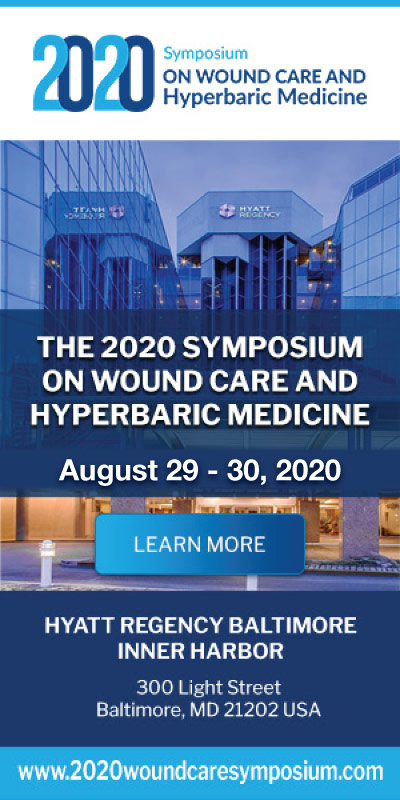
Education
Treatment of Chronic or Hard to Heal Wounds
MVS Wound Care & Hyperbarics uses the following treatment therapies to facilitate healing:
1. Compression Therapy
Used to aid the healing process through elimination of edema. Compression therapy helps to support the calf muscle and increase venous flow. This therapy is usually continued after healing to help prevent future ulcers.
2. Pressure Reduction and Off-loading
Wounds need oxygen and nutrients to heal. When there is pressure to wounds, the availability of those nutrients is impeded. Wound care nurses will educate patients and family on proper pressure reduction and off-loading devices and techniques.
3. Debridement
Used to remove devitalized or necrotic tissue from wound bed. Debridement comes in many forms. Sharp debridement uses surgical instruments, and is usually done in wound care center. Surgical debridement, similar to sharp, is more extensive and must be done in operating room. Enzymatic debridement uses a wound ointment that contains enzymes that consume necrotic tissue.
4. Total Contact Casting
Used for foot wounds, most commonly diabetic. By placing the foot and lower leg in a total cast, compliance is forced, and pressure to the wound bed is distributed throughout the entire plantar surface of the foot.
5. Negative Pressure (VAC) Wound Therapy
By placing a Negative Pressure (VAC) dressing directly on the wound, a vacuum is created. This aids healing by pulling wound edges inward, and granulation tissue upward.
6. Alginate
Dressings Used to absorb exudate from heavily draining wounds. It usually comes in a sheet or rope form, similar to the consistency of piece of felt. Available in plain or silver.
7. Collagen Dressings
Delivers Collagen protein directly to the wound bed to promote healing. Plain and Silver versions are available.
8. Bioengineered Tissue Skin Grafting
Skin grafts are engineered and derived from different sources (animals, placenta, stem cells) that contain large amounts of growth factors. These growth factors stimulate the body’s healing process through growth factor production.
9. Antimicrobial/Antibiotic Therapy
May be applied topically to wound or systemically as an oral antibiotic. Often used in conjunction with above mentioned therapies. Antimicrobial/Antibiotic Therapy is used to control wound infections, systemic infections, or bacterial presence in wound.
Diet for Wound Healing
It’s important to eat well in order to heal well. Having a wound puts extra demands on your body. To heal, your body needs increased amounts of calories, protein, vitamins A and C, and sometimes the mineral zinc. Wounds will heal well if you get enough of the right foods – and if you don’t, they heal more slowly. The following guidelines will help you choose foods that promote healing.
Eat a variety of foods to get all the calories, proteins, and vitamins you need. Every day try to eat foods from the following:
Make sure you are eating enough
Some people may have trouble eating enough at meals to promote wound healing.
Here are a few helpful hints to make sure your body is getting the nutrition it needs to help you heal:
Eat small meals more often.
It might be easier to eat 5-6 times per day rather than 3 meals per day.
Eat healthy snacks.
You can get the nutrition you need by snacking on healthy foods like cheese and crackers, trail mix or mixed nuts, peanut butter and apples, and fresh fruit.
Talk with your provider about taking a nutritional supplement.
If you’re still having trouble getting the protein and calories you need to help you heal, talk with your doctor about nutritional supplements.
Other tips to help the healing process. If you use tobacco, quit. Nicotine can reduce the flow of blood and oxygen to your tissues and slow down the healing process.
If you have diabetes, carefully follow the diet and medication recommendations for your diabetes. If your wounds are not healing, follow up with your health care provider and/or MVS Wound Care & Hyperbarics.
Wound Care: FAQs
What is an acute wound?
An acute wound is an injury to the skin that occurs suddenly rather than over time. It heals at a predictable and expected rate according to the normal wound healing process. Acute wounds can happen anywhere on the body and vary from superficial scratches to deep wounds damaging blood vessels, nerves, muscles or other body parts.
What is a chronic or hard to heal wound?
A chronic wound develops when any acute wound fails to heal in the expected time frame for that type of wound, which might be a couple of weeks or up to six weeks depending on severity.
What causes a chronic or hard to heal wound?
There are many causes for chronic wounds. Most common causes include: diabetes, poor circulation, too much pressure from sitting or lying down, and surgical wounds.
What are the most common types of wounds?
- Ulcers (the most common type of chronic wounds we treat):
- Arterial ulcers – can occur from hypertension, atherosclerosis (plugging) and thrombosis (clotting), where the reduced blood supply leads to an ischemic state.
- Venous ulcers – account for more than half of ulcer cases, especially in the lower limbs (mainly the legs) as associated with deep vein thrombosis, varicose veins and venous hypertension. Venous stasis leads to venous ulcers, where the blood fails to circulate normally.
- Diabetic ulcers – are a common complication in uncontrolled diabetes, resulting in impaired immune function, ischemia (due to poor blood circulation) and neuropathy (nerve damage), which eventually lead to breakage of skin and ulceration.
- Diabetic foot ulcers – result from complications of diabetes secondary to neuropathy, Peripheral Artery Disease or PAD, impaired immune function, hyperglycemia, etc.
- Pressure ulcers – can develop due to lack of blood supply to the skin caused by chronic pressure or friction on an area of the skin (e.g., a person who is bedridden, sits for long periods of time in a wheelchair, or a cst pressing on the skin).
- Infectious wounds – can be bacterial, fungal or viral. If the cause of the infection is not treated with the proper medication, the wound will not heal properly in the expected time.
- Radiation injury wounds – are caused by excessive exposure to radiation materials that weaken the immune system and cause damage to exposed tissue; delaying healing time of all wounds. Examples include: therapeutic (gamma rays or x-rays) or accidental (exposure to radioactive materials from nuclear plant accidents or radioactive devices that detonate).
- Surgical wounds – occur when the blood supply to the surgery area is accidentally damaged or if wound care was inadequate.
- Inflammatory wounds – may develop as a manifestation of a variety of different diseases or may result from some non-disease phenomena. Most of these wounds correlate with autoimmune or connective tissue disease.
- Cancerous wounds – are wounds that harbor cancerous cells disallowing the wound from healing.
How are chronic or hard to heal wounds treated?
At MVS Wound Care & Hyperbarics we have a highly qualified and well-respected team of podiatrists, plastic surgeons, internal medicine providers, vascular surgeons and geriatricians who will assess your wound and determine the best course of action. This may include:
- Treatment for the wound,
- Education and follow up, and/or
- Hyberbaric Oxygen Therapy
Who is at risk of developing an acute or chronic wound?
People with diabetes have a higher risk for getting chronic, non-healing foot wounds. People may also be at risk if they:
- Have limited mobility or are confined to their bed,
- Have poor circulation,
- Blockage in major arteries, or
- Nerve damage in hands or feet
What problems can occur if a chronic wound goes untreated?
If left untreated, a chronic wound can lead to gangrene, infection, or worse, amputation.
When should a doctor be consulted?
If in doubt about the seriousness of the wound, people should consult their doctor. There are some good indications whether the wound is serious or not.
- Any sort of pus or cloudy, creamy fluid
- Increasing redness around the wound
- Increased pain or swelling 48 hours after the wound occurs
- The wound won’t stop bleeding
- Fever
- Wound hasn’t healed in 10 days
- Numbness
- The wound is deep, and you have not had a tetanus shot in the last 5 years
What other things should be reported to your wound care provider?
- Pain from your wound
- Increase drainage
- If a diabetic, report high blood sugar
- Redness around the wound
- Changes in blood pressure, body temperature, or mental clarity
- Any new wounds
- Any changes to medications
- Difficulty completing dressing changes
- Any question or concerns you may have about your wound care
How to make an appointment?
Call us directly at 410-433-4300 and select the location closest to home. HyperHeal has seven conveniently located offices in Rosedale, Glen Burnie, Cockeysville, Pikesville, Abingdon/Bel Air, Westminster and Towson.
How to Get Started:
To find out if Wound Care is right for you, schedule a consultation with one of our top medical professionals.




